Information about returning to activity or sport after an injury
What is a musculoskeletal injury?
A musculoskeletal injury affects your:
- bones
- muscles
- tendons (connects muscle to bone)
- ligaments(connects bones to each other)
Examples include:
- ankle sprain
- muscle tear
- tendinopathy
- joint dislocation
- fractures or broken bones
How healing happens
Your body heals in 3 phases:
| Phase | What’s happening | What you might feel |
| 1. Inflammation (0 to 7 days) | Body sends help to the area | Swelling, pain, warmth |
| 2. Repair (1 to 6 weeks) | New tissue forms | Less swelling, some weakness |
| 3. Remodelling (6 weeks to several months) | Tissue gets stronger | Gradual return of strength and movement |
When can you start moving again?
You can usually start gentle movement early in recovery, it helps healing.
But the type and amount of activity depends on your injury.
Check with a healthcare professional if:
- pain is sharp or worsening
- the area is very swollen
- you can’t move it properly
The “green, yellow and red” zone guide
Use this guide to decide if an activity is appropriate at your stage of recovery or if you should wait before reintroducing it.
Green zone: Safe
- No pain or swelling
- Normal strength and movement
- You feel confident, go ahead and return to the activity
Yellow zone: Be careful
- Mild pain or stiffness
- Some weakness
- New or more intense activity, take it slow. Modify activity. Listen to your body.
Red zone: Stop
- Sharp or increasing pain
- Swelling returns
- Loss of movement or strength, stop. Rest. See a health professional.
Safe steps to return to exercise
Follow the 4 R’s:
Rest and recover
- Allow time for healing.
- Use ice, elevation, or support as advised.
Rebuild strength and movement
- Start with light exercises (for example, stretching, walking).
- Try elements of the sport or activity you wish to return to:
- a light jog, walk or run to return to running,
- lifting moderately heavy items at home to return to weight lifting at the gym
- run, stop, change direction and throwing or kicking a ball to return to team sports such as netball or football.
Reintroduce your sport or activity
- Begin at 50% effort.
- Increase intensity slowly (for example, maximum of 10% more per week).
- Focus on good technique.
Return fully and prevent re-injury
- Warm up properly
- Build in rest days
- Strengthen the area long-term
- Cross-train to avoid overuse
Listen to your body
If you feel:
- Mild discomfort that goes away after activity, it’s usually okay.
- Pain during or after activity that gets worse, stop and rest.
Note: “No pain, no gain” is not true during recovery.
Stay positive: Recovery takes time
- Everyone heals at a different pace.
- What matters is steady progress, not speed.
Need more help?
Talk to a:
- physiotherapist
- GP or sports doctor
- athletic trainer


